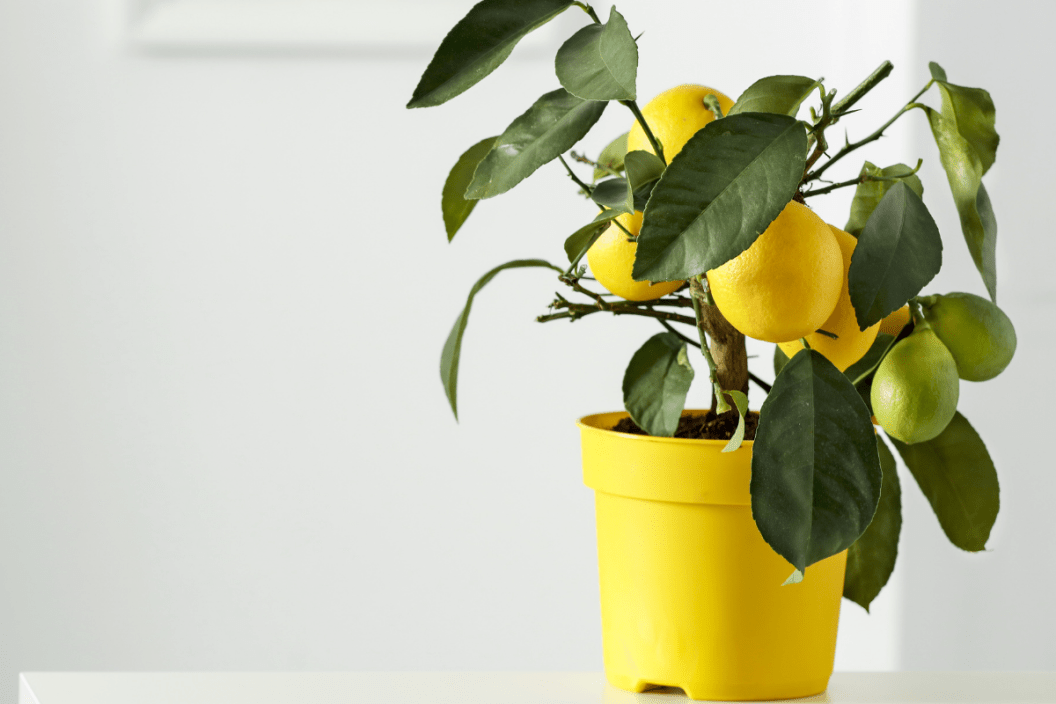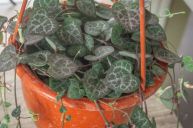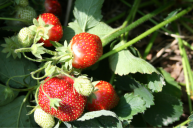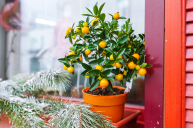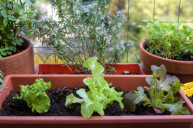Is that one spot next to the couch in the living room looking a little sparse? Instead of a planted palm, why not grow your own indoor fruit trees like a friendly houseplant? While it may sound impossible (they are huge outdoors!), dwarf trees are the perfect size to fit in any living room, sunroom or even that bare spot in the kitchen.
Dwarf trees, which are the result of grafting a fruit tree onto a dwarf rootstock, makes it possible to grow these fruit trees indoors. These types of fruiting trees can be purchased at your local nursery or gardening store or even online. Each plant needs a deep pot (about 1 foot deep at least) and a large layer of drainage material at the bottom of the potting. Water the plant frequently and feed regularly with fertilizer and these delicious fruit tree varieties will love your living room. Most of these trees benefit from grow lights or a south-facing window. Make sure that your pot has draining holes and is filled with potting soil or potting mix meant for trees or indoor plants.
1. Peaches
Peach trees make great indoor plants. Look for the Bonanza dwarf variety which grow on 30-inch stems. These trees do great in a sunny room until the fruit starts to set, when it needs to be in temperatures of 65 to 70°F. Simply set it outdoors on a porch and wait for the edible fruit to grow.
2. Apricots
Like peaches, apricot trees do great indoors. Buy varieties like Shipleys and Goldcot and place in a large pot filled with compost and draining, which you can find on Amazon or at your local gardening shop. Since the flowers cannot pollinate themselves, use a paintbrush to gently transfer the pollen from one flower to another.
3. Figs
While most fig plants have large roots, the Negro Largo variety works great in a large pot. Place the fig tree in a well-lit room away from direct sunlight for the best results, feeding with fertilizer two to three times a season.
4. Lemons
Citrus trees do extremely well indoors. Grow Meyer lemons, which self pollinate, for the best crop. These citrus plants need a lot of sunlight and humidity, especially Meyer lemon trees, which can be mimicked with a quick spray of water from a spray bottle.
5. Limes
Like lemons, limes love growing indoors. Kaffir limes (which also produce amazing leaves to use in Thai cuisine) is the tree of choice for growing inside. Lime trees require about eight to twelve hours of sunlight every day, so keep these citrus fruit trees in full sun to produce fruit. Then make key lime pie from your own limes!
6. Olives
These self-pollinating olive trees are easier to care for than most other fruit trees. When buying, look for the Arbequina or Picholine varieties which will grow fruits. Simply water the tree when the top inch has dried out and give about six hours of sunlight each day.
7. Avocado
While it's not easy to grow an avocado tree indoor, it is possible. Rather than growing your own fruit from a pit, use varieties like Wurtz, Gwen and Whitsell for the best results. Water the plant regularly and celebrate when the avocados on your indoor fruit tree starts coming in.
8. Bananas
Self-pollinating, the Super Dwarf Cavendish or Dwarf Red is the best bet for an indoor banana tree. Fertilize the plant monthly and mist with a spray bottle to mimic a bit of humidity.
9. Nectarines
Like peaches, nectarine trees can grow as short as 30 inches and love growing in a sunny indoor location. Opt for the nectarella variety and place on the porch when the fruit starts growing on this indoor fruit tree.
10. Oranges
https://www.instagram.com/p/B5YD-u6pTFX/?igshid=rir0hoo13xsh
Calamondin trees are the best orange trees inside though the fruit is incredibly source. These dwarf fruit trees are comparable to Meyer lemon trees and lime trees in that they self-pollinate.
Have you ever grown fruit plants before?
Editor's Note: Products featured on Wide Open Eats are independently selected by our editors. However, when you buy something through our links, we may earn a commission.
This post was originally published in 2018.
